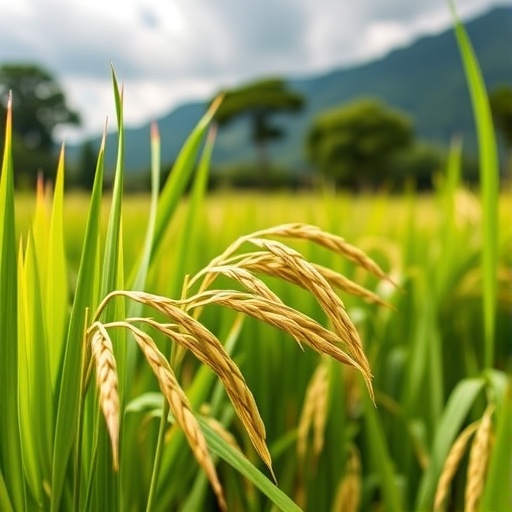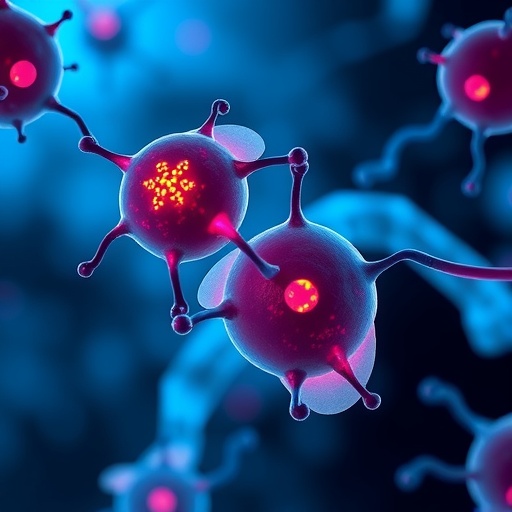
Scientists have long debated the intricate origins of Oryza sativa, the species encompassing all cultivated Asian rice varieties. Recent advancements in genomic technologies and analytical methods are now illuminating this complex evolutionary history with unprecedented clarity. In a groundbreaking study encompassing 280 distinct rice accessions, researchers have constructed a high-resolution pangenome, integrating wild and cultivated varieties to unravel the tangled web of rice domestication and subsequent diversification.
By leveraging whole-genome single nucleotide polymorphism (SNP) data, the team generated a robust neighbour-joining phylogenetic tree that demarcates the evolutionary relationships within and between rice subpopulations. These insights are further enriched by archetypal analyses, which collectively illustrate the genomic structures underpinning population stratification. The study confirms the distinct evolutionary roots of major rice groups: japonica and basmati trace back to an Or-IIIa lineage, indica originates from Or-Ia, and aus aligns closely with Or-Ib. Notably, these origins are largely situated in the geographically and genetically rich context of South Asia, emphasizing its pivotal role as a cradle of rice cultivation.
Importantly, the researchers expanded upon previous rice genome references by integrating multiple high-quality genomic datasets, thereby producing a comprehensive cohort that reflects the vast genetic heterogeneity within Oryza species. This aggregation facilitates nuanced evolutionary inquiries, including the dissection of gene flow patterns and introgression events. For instance, this work highlights significant levels of genomic introgression from indica into wild rice clades, particularly into Or-Ia, suggestive of ongoing bidirectional genetic exchange that may have shaped modern rice diversity.
The analyses revealed that nucleotide diversity (denoted π) is markedly higher in wild rice compared to cultivated forms. This diversity is accompanied by a more rapid decline in linkage disequilibrium (LD), indicating that wild populations harbor greater allelic variation and recombination histories. Such findings underscore the genetic bottlenecks imposed by domestication and the concomitant reduction in effective population size, which have historically punctuated rice’s evolutionary narrative.
Disentangling the domestication pathways, the study employed population differentiation metrics such as fixation index (F_ST) and pairwise genomic distance (DST). These analyses illustrate notably reduced genomic distances between Or-Ia and indica, relative to other wild-cultivated pairings, highlighting a tighter ancestral relationship. Yet, despite this proximity, the researchers detected discrete regions within the Or-I genome indicative of pre-domestication divergence and independent origins, particularly when excluding introgressed fragments. This genomic partitioning supports a model wherein indica and aus emerged along separate trajectories prior to widespread human cultivation.
A standout discovery involves an intriguing clade within indica, designated ‘intro-indica,’ which clusters phylogenetically with Or-Ib and aus varieties native to South Asia. Population structure analyses reveal that intro-indica carries shared ancestral components with aus varieties, revealing extensive historical admixture. These inter-subpopulation gene flows may reflect both ancient cultivation practices and ongoing agricultural interbreeding, underscoring the fluidity of rice genomic landscapes.
Further evidence of hybrid ancestries is visible in basmati rice, a group noted for its aromatic qualities and slender grains. Genetic analyses demonstrate basmati’s admixture origins, combining elements of intro-indica and japonica genomes. This synthesis aligns with previous agronomic observations and provides a genomic framework for understanding basmati’s unique phenotypic traits and its adaptation to the Indian subcontinent’s environmental conditions.
The genomic dissection of introgression events, employing methods such as F_3 admixture testing, reinforces the complexity of rice’s domestication history. Introgression fragments—large genomic segments exhibiting near-identical sequence similarity—were quantified across populations. Or-Ia, for example, was found to contain about 40 megabases of segments introgressed from indica, a remarkable finding that challenges simplified models of linear domestication and highlights the dynamic genomic interplay between wild and cultivated rice.
In addition to showcasing the intricate evolutionary tapestry of rice, the study’s extensive use of whole-genome SNP data and population genomic tools sets a new standard for pangenomic research. It advances understanding not only of lineage diversification but also of the mechanisms facilitating adaptation, hybrid vigor, and trait introgression—key aspects for future crop improvement strategies in the face of global climate challenges.
The comprehensive integration of supplementary evolutionary analyses, including examination of different classification schemes for wild progenitors, allowed researchers to reconcile conflicting hypotheses surrounding rice’s domestication. Their findings advocate for a model featuring multiple domestication events and subsequent gene flow rather than a single origin, resolving longstanding debates and aligning with emerging archaeological and genetic evidence.
This landmark investigation also highlights the potential for leveraging genetic diversity preserved in wild rice relatives. The elevated nucleotide diversity and distinct population branches suggest reservoirs of alleles that could be harnessed for breeding stress resilience traits into modern cultivars. As climate pressures intensify, such insights prove invaluable in securing global food security through genetic innovation.
Ultimately, this study exemplifies how integrating state-of-the-art genomic data with sophisticated computational analyses can radically reshape our understanding of fundamental agricultural species. By mapping the evolutionary trajectories and admixture events that sculpted rice genomes, scientists are equipped with precise genomic blueprints to guide sustainable cultivation and targeted genetic enhancement, ensuring that this staple crop continues to nourish humanity for generations to come.
Subject of Research: Evolutionary genomics and domestication history of wild and cultivated Asian rice (Oryza sativa)
Article Title: A pangenome reference of wild and cultivated rice
Article References:
Guo, D., Li, Y., Lu, H. et al. A pangenome reference of wild and cultivated rice. Nature (2025). https://doi.org/10.1038/s41586-025-08883-6
Image Credits: AI Generated
Tags: comprehensive rice genomic studiesgenetic heterogeneity in Oryza speciesgenomic technologies in agricultureindica and aus rice lineagesjaponica and basmati rice originsOryza sativa evolutionary historypangenome reference of ricephylogenetic tree of rice varietiesrice domestication and diversificationsingle nucleotide polymorphism in riceSouth Asia rice cultivation historywild versus cultivated rice





